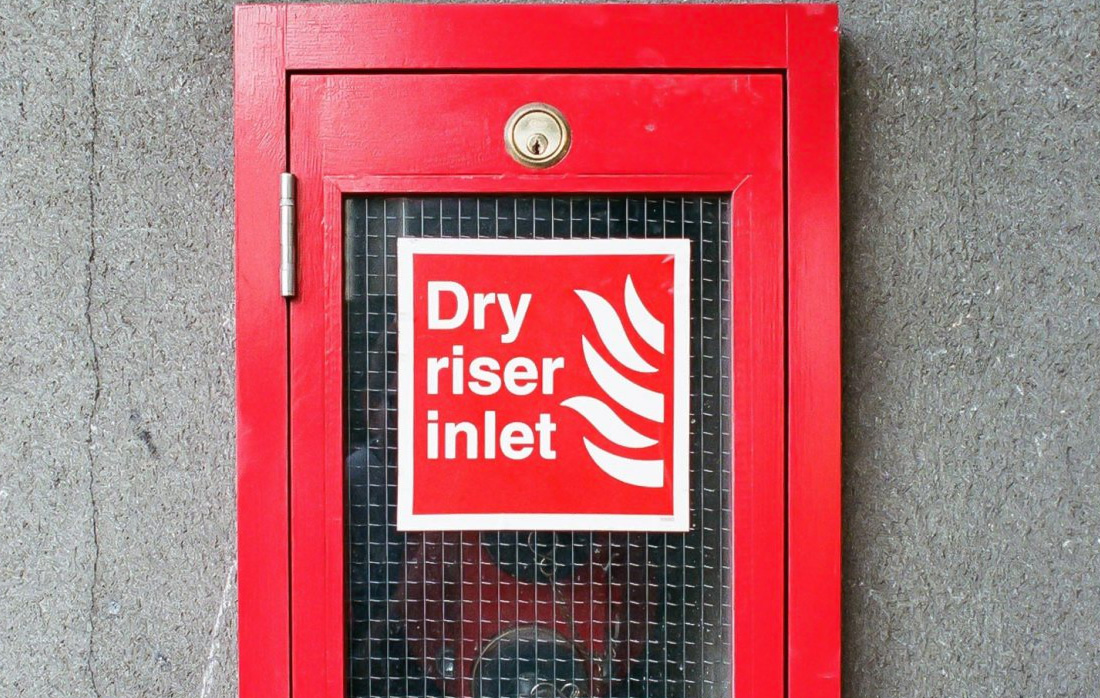Dry Risers require a full annual pressure test and six-monthly visual check in between. Testing is carried out in compliance with current British Standards.
Dry Riser Inspections
Dry Risers require a visual inspection every 6 months following their annual pressure test. This is key, as during the inspection your appointed professional will be checking for any obvious signs of damage/vandalism to ensure that the units are in good working order. Remember; a damaged/faulty Dry Riser can cause serious repercussions for the fire bridge when it comes to fighting fires.
Dry Riser Annual Test
All Dry Risers need to undergo a pressure test every 12 months. This is actually a legal requirement. Only a flow test or pressure test can confirm that the water can be delivered as expected when the riser is required in the event of an emergency.
Pressure Test: the unit is filled with water at a given pressure for a period of time. All inlets and outlets are also checked for leaks during the test.
Flow Test: this determines that when the water jets are in operation, a suitable running pressure is still available within the system. This will also ensure there are no blockages in the system. Any faulty or damaged parts will need to be replaced. After such, testing will need to be repeated before issuing a certificate of compliance.
